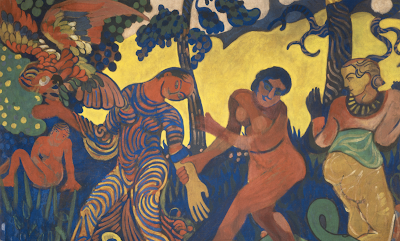Running until August 13 folks, the National Gallery’s After Impressionism: Inventing modern art.
This is a thought-provoking journey showing the struggle between realism and abandonment of naturalism in painting and what Katie did next.
Headlined by Cezanne, Gauguin and Van Gogh this is chance to see ninety seven paintings many of which have been coaxed from private collections for our grateful gaze.
Paul Cezanne’s (1839 - 1906) still life paintings and his landscapes play ducks and drakes with volume and perspective. Van Gogh’s frantic brushwork, rhythmic patterning (?verb) and the way he crops his work is an eye opener. Edgar Degas (1834–1917) was breaking the rules on composition and a painting’s edge with his dizzying studies.
 |
Paul Cezanne 'Mont Sainte-Victoire' 1902‒6 |
Gauguin takes us East, and the show’s description of his work could not resist references to 'colonialism', his 'relationships' to those whom he painted and cohabited; a lest-we-forget piece of wokery if ever there was.
Lots of new names: Paul Sérusier (1864 - 1927) - his Le Talisman, Paysage au Bois d'Amour is early abstraction as is Lady of Fashion by Eduard Vuillard’s colour-field approach.
The concept of painter as commentator (which today seems to the only way a painter should be) is introduced in Jan Toorop’s 1858–1928 The Eve of the Strike. A palette and composition ladened with political undertones.
%20Jan%20Toorop.png) |
The eve of the strike (Dark clouds) Jan Toorop |
Surprises: A riot of colour by Edvard Munch in his 1915 painting Cabbage Field. A scream of colour no less (sorry).
Representational Mondrian? Excuse me? Yes, there are two landscape studies next to his more familiar approach in Composition No XVI.
Thrills and mysteries to enjoy and think about, demanding two if not three visits. If three then you have amortised the cost of an NG annual membership. Get and go.
 |
André Derain, ‘La Danse’ |

